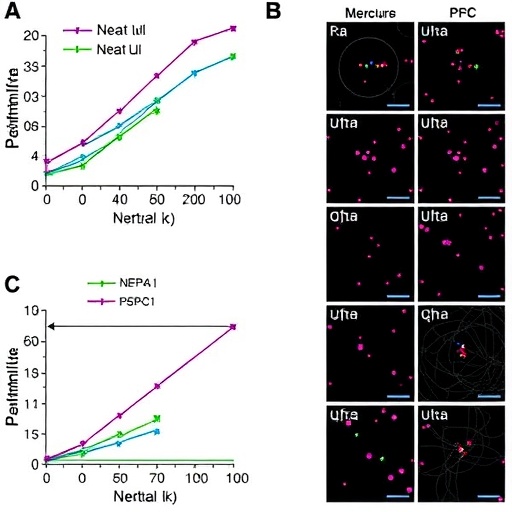In a groundbreaking study set to reshape neonatology and developmental neuroscience, researchers have uncovered crucial insights into the long-term neurodevelopmental consequences of Preterm Premature Rupture of Membranes (PPROM), a complication tragically common in preterm births. Published in the Journal of Perinatology in 2025, this comprehensive analysis delves deep into the complex pathways by which PPROM not only predisposes infants to immediate perinatal risks but also affects their neurological trajectories well into childhood and beyond.
Preterm Premature Rupture of Membranes refers to the spontaneous breaking of fetal membranes before 37 weeks of gestation and prior to the onset of labor. The condition accounts for nearly 30% of all preterm deliveries, marking it as a critical focus for maternal-fetal medicine and a persistent challenge in obstetrics. While the immediate risks associated with PPROM—such as infection, placental abruption, and preterm labor induction—have been widely studied, the study by Bhullar and colleagues takes an unprecedented approach by exploring its ripple effects on neurodevelopmental outcomes in affected neonates.
Central to their investigation is the premise that disruption of the amniotic sac and ensuing intrauterine environment alterations trigger an inflammatory cascade with profound repercussions on the developing fetal brain. Utilizing advanced neuroimaging techniques alongside longitudinal neurodevelopmental assessments, this research provides compelling evidence that the inflammatory milieu associated with PPROM may lead to subtle yet significant alterations in cortical architecture, connectivity, and ultimately, cognitive and motor functions.
.adsslot_hxM7IOaT1g{ width:728px !important; height:90px !important; }
@media (max-width:1199px) { .adsslot_hxM7IOaT1g{ width:468px !important; height:60px !important; } }
@media (max-width:767px) { .adsslot_hxM7IOaT1g{ width:320px !important; height:50px !important; } }
ADVERTISEMENT
The authors detail how pro-inflammatory cytokines, released during the intra-amniotic infection often secondary to membrane rupture, cross the fetal blood-brain barrier. This biochemical infiltration initiates microglial activation, a cellular immune response within the central nervous system, which, while protective, has been linked to neuropathological changes such as white matter injury and impaired synaptogenesis, critical processes for normal brain maturation. These neuroimmune interactions, the study argues, may underpin the increased incidence of neurodevelopmental disorders observed in the cohort of infants born after PPROM.
Expansion of the sample size and the meticulous stratification of subjects by gestational age allowed the researchers to identify nuanced differences in outcomes based on the timing of membrane rupture. Earlier occurrence of PPROM correlated robustly with more severe neurodevelopmental deficits. Particularly, infants born before 28 weeks demonstrated higher rates of cerebral palsy, cognitive delay, and sensory-processing abnormalities when compared to those whose membranes ruptured nearer to term.
Notably, the research team incorporated state-of-the-art diffusion tensor imaging (DTI) and functional MRI (fMRI) analyses to detect microstructural changes in white matter tracts and alterations in functional connectivity patterns within developing brain networks. This neuroimaging dimension offers a window into the subclinical manifestations of brain injury that standard cranial ultrasounds might overlook. These imaging biomarkers may eventually serve as pivotal tools for early identification of at-risk neonates, enabling timely therapeutic interventions.
In addition to neuroimaging, the longitudinal aspect of the study entailed rigorous neuropsychological evaluations up to the age of five. Emphasizing not only motor skills but language development, executive function, and socio-emotional behavior, the assessments revealed that the impact of PPROM extends beyond physical growth parameters. This revelation urges clinicians to consider extended surveillance and multidisciplinary approaches encompassing pediatric neurology, psychology, and rehabilitation services.
One of the remarkable features of this study is the integration of molecular biology with clinical pediatrics, reflecting a vibrant translational research framework. Genetic analysis of placental tissue samples uncovered potential polymorphisms affecting cytokine regulation, which may confer differential susceptibility to neuroinflammation among infants exposed to PPROM. These findings hold promise for personalized medicine approaches in managing and counseling families facing this high-risk condition.
Furthermore, the investigation revisits longstanding debates regarding the benefit-risk ratios of interventions such as corticosteroid administration and antibiotic therapy in PPROM management. The data suggest that while antenatal corticosteroids remain essential for enhancing pulmonary maturity, their role in modulating neuroinflammatory processes warrants further scrutiny. Similarly, preemptive antibiotic treatment reduces infection risks but may inadvertently influence the fetal microbiome, with yet-unknown implications for neurodevelopment.
The study also shines a light on socioeconomic and environmental factors that may exacerbate or ameliorate the neurodevelopmental trajectory post-PPROM. Maternal stress levels, nutrition, and access to neonatal intensive care significantly influenced the developmental outcomes observed, compelling a holistic view of prevention and care.
In the wider context of preterm birth research, these findings underscore the intricate interplay between obstetric events and lifelong neurological health. The elucidation of mechanisms by which PPROM mediates brain injury invites innovation in both therapeutic targets and clinical protocols, potentially revolutionizing perinatal care. Importantly, the study champions the need for interdisciplinary collaboration and early intervention programs tailored to this vulnerable population.
Looking forward, the authors advocate for expanded multicenter trials to validate their findings across diverse populations and healthcare settings. Additionally, longitudinal tracking into adolescence and adulthood could elucidate the enduring cognitive, behavioral, and psychiatric sequelae attributable to early-life exposure to PPROM. This expanded scope will inform public health strategies aiming not only to improve survival but also quality of life for preterm survivors.
In summary, the seminal work by Bhullar et al. amalgamates cutting-edge neuroimaging, molecular genetics, and clinical evaluation to unravel the profound neurodevelopmental consequences of Preterm Premature Rupture of Membranes. It heralds a paradigm shift in understanding how a seemingly isolated obstetric event orchestrates complex neurobiological cascades, with lifelong ramifications. As neonatal medicine advances into an era of precision diagnostics and personalized therapeutics, this research offers a beacon for enhancing outcomes for some of the most vulnerable members of society.
The implications resonate beyond the academic and clinical realms, highlighting a pressing societal imperative: to invest in research, healthcare infrastructure, and family support systems that together nurture brain development from the earliest moments of life. The journey from membrane rupture to cognitive maturation is fraught with challenges but, armed with such scientific revelations, the medical community is better equipped than ever to chart a hopeful course forward.
Subject of Research: Preterm Premature Rupture of Membranes (PPROM) and its impact on neurodevelopmental outcomes.
Article Title: Preterm Premature Rupture of Membranes (PPROM) and Neurodevelopmental Outcomes.
Article References:
Bhullar, H., Stritzke, A., Makarchuk, S. et al. Preterm Premature Rupture of Membranes (PPROM) and Neurodevelopmental Outcomes. J Perinatol (2025). https://doi.org/10.1038/s41372-025-02360-8
Image Credits: AI Generated
DOI: https://doi.org/10.1038/s41372-025-02360-8
Tags: advanced neuroimaging in neonatologyinflammatory response and neurodevelopmentJournal of Perinatology study findingslong-term effects of PPROMlongitudinal studies in child developmentmaternal-fetal medicine challengesneonatal brain developmentobstetrics complicationsperinatal risks of PPROMPPROM neurodevelopmental impactpreterm birth outcomespreterm premature rupture of membranes





